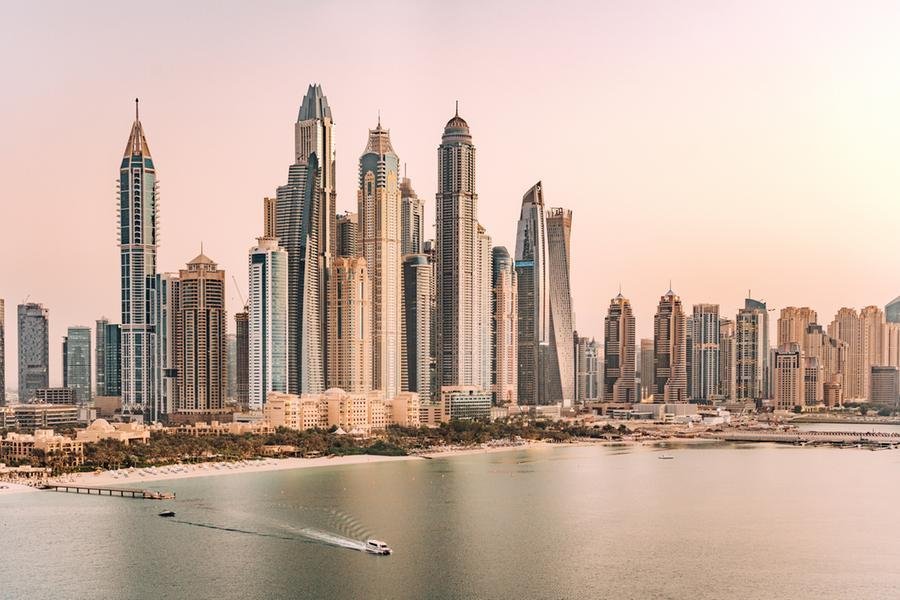- Dubai’s real estate market is experiencing a powerful surge in momentum, with strategic infrastructure projects, global investor confidence, and a new wave of tech-savvy buyers driving prices upward in key areas.
Dubai: At the heart of this resurgence is the Dubai Metro Blue Line, a game-changing infrastructure upgrade that is transforming connectivity across the city. Areas like Dubai Silicon Oasis, Academic City, and Mirdif—once overlooked—are now emerging as prime investment zones, with demand climbing fast.
A1 Properties reports a marked increase in buyer interest within infrastructure-linked areas and mature master-planned communities. The appeal? Easy access, lifestyle upgrades, and long-term capital appreciation.
“We’re seeing a perfect storm of opportunity: smart infrastructure, digital empowerment, and diversified demand,” said a spokesperson at A1 Properties.
As of Q2 2025, the Dubai Real Estate Market continues to exhibit steady expansion, marked by high transaction volumes, resilient pricing, and a diversified investor base. The emirate recorded over AED 120 billion in residential sales during the first quarter alone—an 18% increase compared to Q2 2024—driven primarily by sustained demand in both the off-plan and ready property segments.
Average residential prices across the city rose by approximately 5.6% year-over-year, with apartment prices increasing more moderately at 4.2% and villa prices climbing by 7.9%. This upward movement is fueled by constrained supply in prime villa communities, and high absorption rates in emerging areas.
Off-Plan Projects Steal the Spotlight
Off-plan developments continue to dominate investor interest, thanks to flexible payment schemes and early access to infrastructure-enhanced communities. These projects not only offer attractive entry points but also drive robust transaction volumes as investor confidence strengthens.
Global Capital Flows In
Foreign capital surged in Q2 2025, driven by favorable currency exchange rates and growing confidence in Dubai’s world-class regulatory environment. Buyers from the UK, Europe, and India are seizing opportunities to acquire dirham-based assets at value, leveraging currency arbitrage for long-term gain.
Tech-driven platforms—especially those powered by AI—are playing a crucial role in accelerating cross-border purchases. From financing to location analysis, digital innovation is making property acquisition faster, smarter, and more seamless than ever before.
Balanced Growth, Global Appeal
Despite rising prices in select locations, Dubai remains competitively priced when compared to global hubs like London, New York, and Hong Kong. The result is a balanced, resilient market that’s built on fundamentals—not speculation.
Dubai’s investor base has become remarkably diverse, spanning the GCC, Europe, Asia, Russia, and Africa, which adds layers of stability and insulates the market from regional shocks.
Furthermore, enhanced regulations by the Dubai Land Department have brought greater transparency and discipline to financing practices, curbing excess and reducing bubble risk.
A Strong Outlook for 2025 and Beyond
Looking ahead, A1 Properties projects that Dubai will close 2025 with:
- Stable yields
- High absorption rates in infrastructure-connected areas
- Continued recognition as a global benchmark for safe, high-return property investment
Dubai’s real estate landscape is evolving—fast. As smart infrastructure meets smart investment, the emirate is setting a new global standard for urban development and real estate opportunity.
Factors Influencing the Dubai Housing Market
Dubai housing market in 2025 is shaped by a combination of economic forces, demographic shifts, regulatory incentives, and global investment patterns. Understanding these key drivers is essential for investors seeking to optimize entry timing, evaluate long-term performance, and position assets within high-demand segments.
- High Mortgage Rates: Home financing costs in the UAE remain elevated, with rates hovering between 5.25% and 5.75%. These higher borrowing rates are discouraging many first-time buyers from entering the ownership market, while also delaying upgrades among existing homeowners. The result is increased rental market retention and a cooling effect on mid-tier resale activity.
- Supply Constraints: Although developers continue to launch new projects, actual handovers are limited, particularly in the mid-income and affordable housing categories. Most upcoming supply is concentrated in luxury or branded developments, leaving a gap between real demand and available product. This imbalance supports continued price strength in several mid-tier neighborhoods.
- Population Growth and Migration: Dubai’s population surpassed 3.65 million in early 2025 and continues to grow rapidly due to residency reforms and favorable living conditions. New residents—particularly from India, Russia, Europe, and China—are fueling both rental absorption and ownership interest, especially in centrally located or master-planned communities.
- Limited Delivery of Affordable Units: Despite high-profile launches in areas like Dubai Creek Harbor and Business Bay, construction timelines and developer focus remain skewed toward high-margin luxury inventory. The affordable housing gap continues to widen, driving strong demand in areas like JVC, Al Furjan, and Dubai South.
- High Rental Demand: Many residents are choosing to lease rather than buy, largely due to high interest rates and increasing property values. As a result, rental yields remain attractive, especially in mid-tier and emerging communities. Investors are capitalizing on short-term rental strategies and extended lease terms to enhance returns.
- Foreign Investor Activity: Dubai continues to attract a diverse base of foreign capital. Over 58% of property transactions in Q2 2025 were driven by international investors. Buyers from India, the UK, China, and Russia are acquiring assets across both primary and secondary markets, drawn by Dubai’s tax-free regime and long-term residency options.
- Regulatory Advantages: Dubai’s business-friendly regulatory framework—featuring no property tax, no capital gains tax, and streamlined visa policies—makes it a standout global investment destination. Ongoing improvements in digital transactions and tenancy laws have also increased transparency, reducing risk for overseas investors.
Dubai Housing Market Forecast for 2026
Looking ahead to 2026, the Dubai housing market is expected to remain resilient and competitive, though the pace of growth is likely to moderate. Rising interest rates, supply-demand imbalances in affordable segments, and a more mature investor base are contributing to a climate of cautious but confident expansion.
While Dubai’s long-term fundamentals remain strong, near-term projections suggest steady growth rather than speculative surges.
Home prices in Dubai are projected to increase by 3.5% to 5.2% over the next 12 months. With the current median home price near AED 1.7 million, this would translate to values ranging between AED 1.76 million and AED 1.79 million by early 2026. Appreciation will continue to be driven by strong end-user demand, international capital inflows, and supply shortages in mid-income communities.
Inventory will remain tight in most districts. Although several new developments are in progress, the majority of handovers in 2026 are expected to be in high-end segments. This imbalance will likely maintain pressure on prices in key mid-tier zones, where demand continues to outstrip supply—particularly for move-in-ready or community-integrated units.
Areas such as Jumeirah Village Circle, Al Furjan, and Arjan are expected to attract increased buyer activity due to their affordability and long-term development potential.
The rental market is also expected to strengthen. Rents are projected to rise between 3% and 4.5%, fueled by a shortage of new rental inventory, high borrowing costs, and continued population growth. One-bedroom units could average between AED 80,000 and AED 82,500 per year, while two-bedroom apartments may reach AED 125,000 in high-demand neighborhoods.
Vacancy rates are not expected to rise significantly due to the limited supply of affordable rentals. Most upcoming developments in 2025 and 2026 cater to the luxury segment, which does little to alleviate pressure in mid-market areas. This will likely result in continued rent inflation, especially in communities near employment hubs, transit corridors, and lifestyle infrastructure.
Economically, Dubai remains in a strong position. Strategic investments in infrastructure, growing job markets in finance, logistics, and tourism, and continued population growth all support long-term housing demand. This favorable environment is further bolstered by investor-friendly regulations and the absence of property taxes.
Demographic patterns also remain positive, with a steady influx of skilled professionals and high-income expatriates supporting demand across both ownership and rental markets—especially in districts offering strong yields and capital appreciation potential.
Salah Omar
Associate Director
INVESTOR RELATIONS
salah@a1properties.ae
A1 Properties LLC





